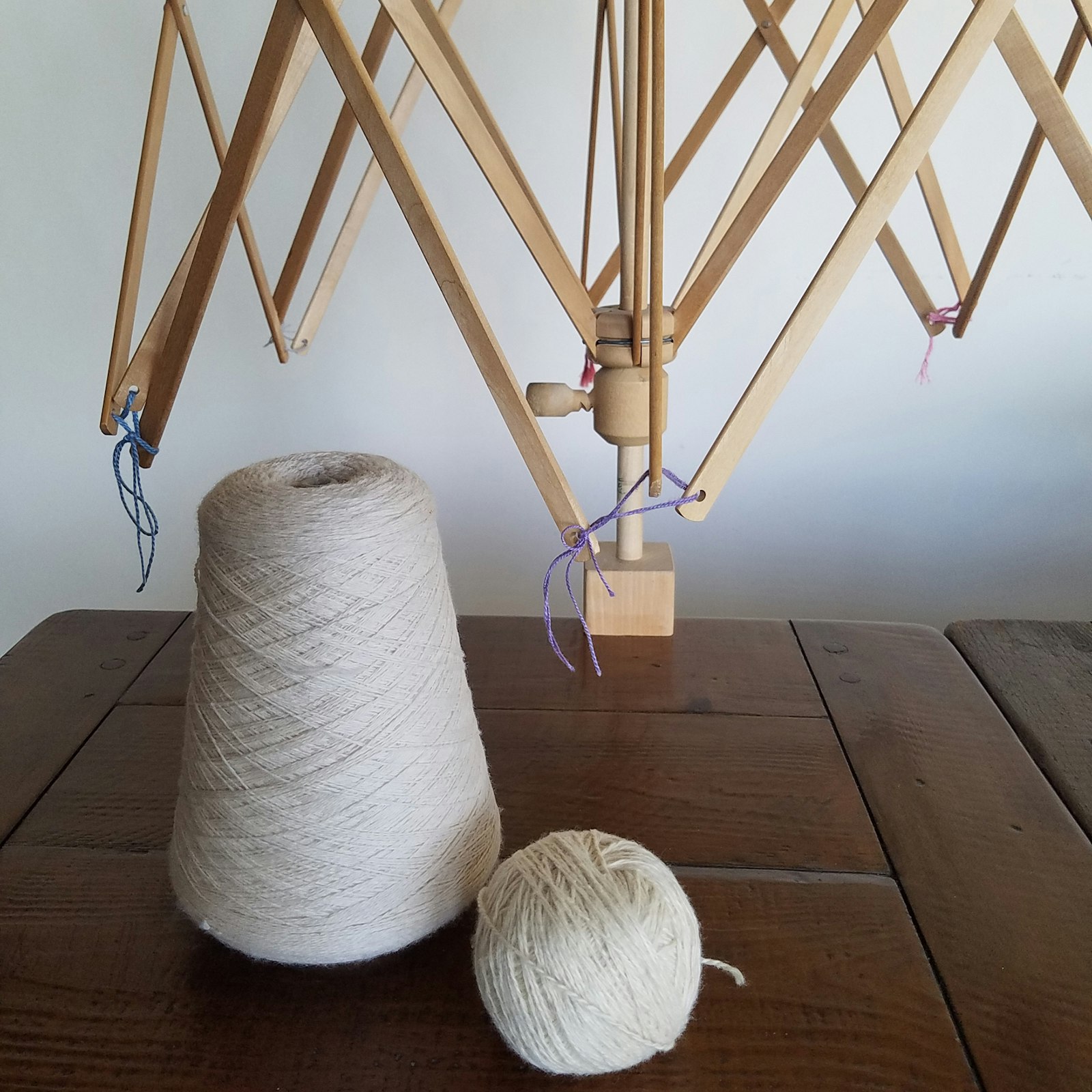One of the only classes I remember from high school is botany, although I can‘t reliably tell you the parts of a flower. What I do recall is researching natural dyeing, writing a report, and presenting it to the class. For the project, I collected large quantities of marigolds, lupines, and onion skins. I was too young to purchase one of the mordants, so my mother had to buy it for me. I skeined some undyed wool yarn, prepared dye-pots, and dyed the wool. The results were nice, various colors of gold and yellow and grey green. I hope I was careful about handling the mordants and being dye safe in our kitchen but can‘t be certain.
 Lupine flowers create a grey-green dye. Photo by Vitolda Klein-Alche on Unsplash
Lupine flowers create a grey-green dye. Photo by Vitolda Klein-Alche on Unsplash
I’m not sure why I was interested in natural dyeing; I had no use for the yarn; I barely knew how to knit. Fast-forward many years, and it feels like dyeing remains just beyond my reach. It‘s intriguing, but that memory of a chemical being too dangerous for me to buy on my own has stuck with me. I’ve dabbled in outdoor dyeing with indigo, and mud dyeing, and from time to time “real” dyeing using powders, mordants, and dye-pots on the stove although it always makes me a bit nervous to work with dyes in the kitchen.
 Photo by Jelleke Vanooteghem on Unsplash
Photo by Jelleke Vanooteghem on Unsplash
I have a cone of 2/18 white merino that has been in my stash without moving for almost 20 years. I bought it when I thought I wanted to weave a lot of black and white scarves. I wove one, got bored with the idea, and was left with most of a pound of wool. Over the years, I’ve toyed with making dye-pots for it but haven’t ever done so. Recently, I realized that the dye world has changed, at least a bit, and that change is perfect for me because in a sense, it has become another type of backyard dyeing.
Abundant Earth Fiber’s Wool Tincture Dyes take away the worry and mess of dyeing wool, and move it out of the kitchen (mostly). You can buy dye powders in what look like tea bags (called tinctures). To dye my wool, I simply have to drop a tincture of dye into a gallon jar, fill it with boiling water, add the yarn and a packet of citric acid (not scary), and let it sit. It’s been hot enough this summer that I wonder if I even need to boil the water, but I will—and then leave my jar outside in the sun for extra oomph.
For anyone interested in the Abundant Earth Fiber’s dyes, right now all new and existing Long Thread All Access subscribers can save 25% storewide. The offer is only available through August 15th, 2022, so don’t delay! Find out how to get your discount code here.
I’ve ordered my dyes—coral, dusty rose, and pumpkin, with rust and sage for accents—and, because I needed one, a gallon jar. “As we speak,” I’m skeining the wool as well as a little cashmere, then I’m off on a new dyeing adventure. My goal: a light and airy shawl, because you know, I need a pink, coral, and pumpkin shawl. I’ll keep you posted!
Weave well,
Susan

